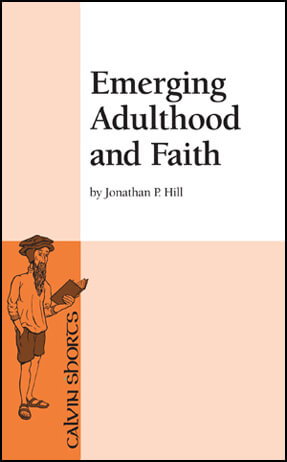Book Review: Emerging Adulthood and Faith
Emerging Adulthood and Faith
by Jonathan P. Hill
Review by Kara Kits
In his book, Calvin University sociology professor Jonathan Hill seeks to temper the alarmism and anxiety over the “exodus” of young people from the Church. By taking a closer look at the collected data, he obtains a more complete, complex, and sometimes counterintuitive understanding of emerging adults and their faith. In his re-evaluation of the data provided by the National Association of Evangelicals, the National Study of Youth and Religion, and the Gallup Polls, Hill address three main issues: the religious practice and identity of young people, the role of higher education, and the issue of faith and science.
Hill begins his overview of emerging adulthood and faith by acknowledging that young people are leaving local churches—beginning in their teenage years and continuing into their early twenties. Yet within this overarching sociological statement, three truths become clear: (1) The percentage of young people with a strong Protestant identity, and the percentage who regularly practice their faith publicly and privately, has barely budged upward or downward over the past forty years—since the 1970s, (2) the number of young people with no religious affiliation has increased over the past several decades, and (3) though the majority of emerging adults who were raised in the Church may decline their participation, the majority of these individuals do not permanently leave the Church—they usually return to previous levels of participation later in life.
The second issue Hill addresses is the idea that college exerts a detrimental and secularizing effect on emerging adults. However, as Hill views the data, college has almost no influence on religious faith. In fact, (1) college had more secularizing effects for past generations than it is does today, (2) college graduates are actually more likely to practice their faith than people who never go to college, (3) there seems to be no mass defection from the faith. As would be assumed, religiously affiliated colleges tend to do a better job at nurturing the faith of students than secular universities.
The final topic of the book is the concern that young people leave the Church because of conflicts between religion and science. Hill discovered that although many young people do believe there is a conflict between religion and science, they do not change their beliefs because of science and its discoveries. Hill’s investigation of the data refutes the supposed crisis of faith caused by science.
In the book’s conclusion, Hill reveals that most young adults are inarticulate about their faith and follow tacit social scripts regarding how they live their lives. The tacit “faith script” identifies the primary function of faith as providing basic moral guidance, and religion is seen as something good for children, but of minimal use for emerging adults. In response to this superficial view, Hill suggests that the Church and Christian educators respond by helping to make students aware of the social scripts, to discern the most dominant messages of these scripts, and to reflect on the role of faith in their home settings. Hill also recommends the Church find ways to actively involve emerging adults in the regular life of congregations and in the heart of worship.
I enjoyed reading this book. Being an educator in a Christian school and a parent of young children, I heard alarming warnings about the future of the Church and the demise of young people of faith. This book sets the issue of emerging adults and faith in its larger historical and cultural context, and gives practical suggestions for what educators and/or parents can do to help young people continue to participate in their faith and church communities.

